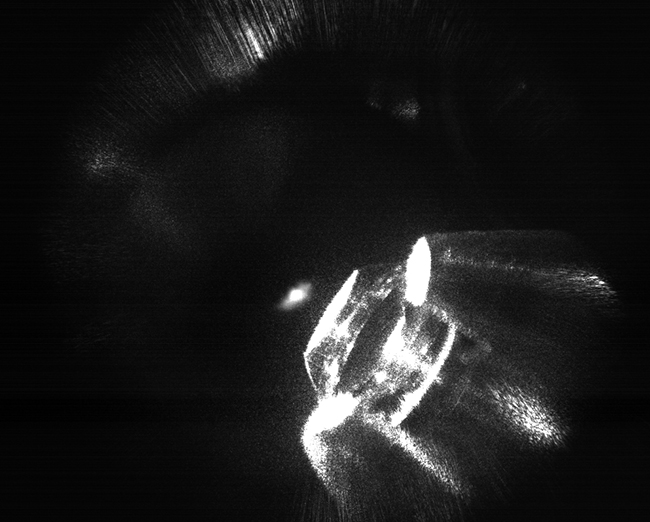Feb 21 2020
For the first time in the field of quantum physics, researchers at the University of Otago have been able to “hold” individual atoms in place and observe complex atomic interactions that have been never seen before.
 Laser-cooled atom cloud viewed through microscope camera. Image Credit: University of Otago.
Laser-cooled atom cloud viewed through microscope camera. Image Credit: University of Otago.
The ingredients essential to studying this quantum process were offered by a range of equipment such as lasers, a vacuum chamber, microscopes, and mirrors assembled in Otago’s Department of Physics, as well as a lot of energy, time, and expertise. To date, this process was only perceived through statistical averaging by performing experiments that involved a huge number of atoms.
The new experiment enhances the existing knowledge by providing a previously undetected view into the microscopic realm, astonishing the team with the results.
Our method involves the individual trapping and cooling of three atoms to a temperature of about a millionth of a Kelvin using highly focused laser beams in a hyper-evacuated (vacuum) chamber, around the size of a toaster. We slowly combine the traps containing the atoms to produce controlled interactions that we measure.
Mikkel F. Andersen, Associate Professor, Department of Physics, University of Otago
When the three atoms come close to each other, a molecule is formed by two of them, and all receive a thrust from the energy liberated during the process. With the help of a microscope camera, the process can be magnified and observed.
Two atoms alone can’t form a molecule, it takes at least three to do chemistry. Our work is the first time this basic process has been studied in isolation, and it turns out that it gave several surprising results that were not expected from previous measurement in large clouds of atoms.
Marvin Weyland, Postdoctoral Researcher, University of Otago
It was Weyland who pioneered this experiment. The team was able to observe the precise outcome of individual processes and visualized a new process in which two of the atoms depart from the experiment together. To date, it has not been possible to achieve this level of detail in experiments with several atoms.
By working at this molecular level, we now know more about how atoms collide and react with one another. With development, this technique could provide a way to build and control single molecules of particular chemicals.
Marvin Weyland, Postdoctoral Researcher, University of Otago
According to Associate Professor Andersen, the method and the level of detail can be challenging to understand for those new to the realm of quantum physics. But he hopes the applications of this science will be valuable in developing next-generation quantum technologies that might have an effect on society as much as previous quantum technologies that enabled advanced computers and the Internet.
Andersen added, “Research on being able to build on a smaller and smaller scale has powered much of the technological development over the past decades. For example, it is the sole reason that today’s cellphones have more computing power than the supercomputers of the 1980s.”
“Our research tries to pave the way for being able to build at the very smallest scale possible, namely the atomic scale, and I am thrilled to see how our discoveries will influence technological advancements in the future,” concluded Associate Professor Andersen.
The results of the experiment demonstrated that more time than expected is required to form a molecule than theoretical calculations and other experiments, which are inadequate at present to explain this phenomenon. Although the scientists propose mechanisms that might explain the discrepancy, they emphasize the need for more theoretical advancements in this area of experimental quantum mechanics.
This study is entirely New Zealand-based and mainly performed by members of the University of Otago’s Department of Physics, with support from theoretical physicists at Massey University.